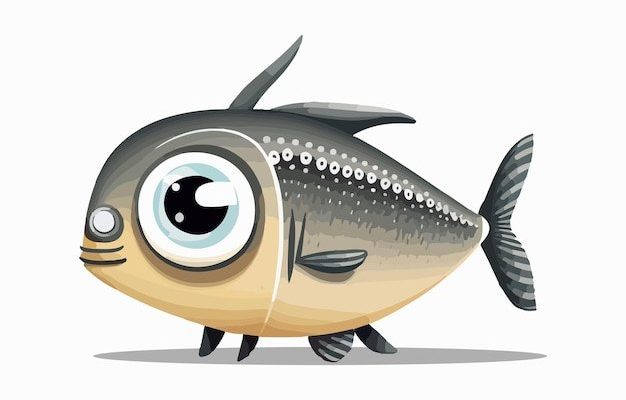
Let’s dive deeper into this intriguing fish, exploring how it evolved and why it’s important to our world today. Here’s the thing: sardines are more than just fish on your plate; they play crucial roles in ocean ecosystems and human diets alike. If you’re curious about how this small fish has navigated its evolutionary journey, you’re in for a treat!
What Are Sardines? A Quick Overview
Before we get into the evolutionary journey, it’s essential to understand what sardines actually are. Sardines are small, schooling fish belonging to the Clupeidae family. They’re mostly found in temperate, subtropical, and tropical waters. The term “sardine” often refers to several species, including the European sardine (*Sardina pilchardus*) and the Pacific sardine (*Sardinops sagax*).
These fish typically grow to about 6 to 12 inches long, and they have a streamlined body adorned with shiny, silver scales. Sardines are known for their rich omega-3 fatty acids, which are beneficial for heart health. Plus, they’re a great source of protein and are often used in various culinary dishes around the world—from Mediterranean pasta to savory salads.
You might be wondering why sardines are so popular. Their small size, delicious flavor, and nutritional benefits make them a staple in many diets. They’re also quite affordable, making healthy eating more accessible to people everywhere.
The Origins of Sardines: A Glimpse into History
Sardines have a long and interesting history. They trace their evolutionary roots back millions of years. The earliest ancestors of sardines date back to the Eocene epoch, around 50 million years ago. It’s fascinating to think about how these fish have changed over time to adapt to their environments.
The sardine’s lineage connects to other fish like herrings and anchovies, all belonging to the same family. These little fish have a unique place in the food chain, acting as important prey for larger marine life such as dolphins, seals, and seabirds. You’ll often find sardines in schools, which provides safety in numbers against predators. Isn’t it interesting how their behavior and physical traits have evolved to ensure their survival?
Understanding the origins of sardines helps us appreciate their role in marine ecosystems. As a species that has thrived through various environmental changes, they remind us of nature’s incredible adaptability.
How Sardines Have Adapted Over Time
Throughout their evolutionary journey, sardines have made significant adaptations that allow them to thrive in different aquatic environments. For instance, they are incredibly efficient feeders. Sardines eat plankton, tiny organisms drifting in the water, by filtering it through their gills as they swim. This feeding strategy has been crucial for their survival, allowing them to exploit abundant food sources across various ocean regions.
Also, sardines can tolerate a range of water temperatures and salinities, which has enabled them to inhabit diverse marine ecosystems—from coastal waters to the open ocean. Their schooling behavior is another fascinating adaptation; it not only protects them from predators but also helps them find food more efficiently.
Honestly, it’s remarkable how these little fish have learned to thrive despite challenges. Their evolutionary adaptations serve as a testament to nature’s ingenuity, highlighting the importance of biodiversity in our oceans.
The Role of Sardines in the Ecosystem
Sardines play a crucial role in maintaining balance within marine ecosystems. As a key prey species, they support a variety of larger fish and marine mammals. Their presence in the food web is vital for the health of ocean environments. Without sardines, many other species would struggle to survive, leading to imbalances that can affect the entire ecosystem.
Moreover, sardines help control plankton populations. By feeding on these tiny organisms, they keep the food web in check, preventing overgrowth that could disrupt marine life. This makes sardines essential not just for their predators but also for the overall health of the ocean.
From an ecological perspective, the sardine’s journey reveals how interconnected life is in the ocean. Their ability to adapt and thrive illustrates nature’s delicate balance, reminding us of the importance of conservation efforts to protect these vital species.
Challenges Facing Sardines Today
Despite their resilience, sardines face several challenges in today’s world. Overfishing is one of the most significant threats, as demand for sardines in the culinary market has surged. Unsustainable fishing practices can lead to depleted populations, disrupting the balance of marine ecosystems.
Climate change also poses serious challenges to sardines. Rising ocean temperatures and changing currents can affect their migratory patterns and breeding cycles. These changes may lead to a decline in sardine populations, impacting not only the fish themselves but also the larger marine life that depends on them.
It’s important to recognize how our actions can affect these small fish and the entire ocean ecosystem. Advocating for sustainable fishing practices can help protect sardines and ensure they continue to thrive for generations to come.
What the Future Holds for Sardines
Looking ahead, the future of sardines depends on multiple factors, including conservation efforts and sustainable fishing practices. As more people become aware of the importance of maintaining healthy fish populations, we can work together to protect this vital species.
Scientists are actively studying sardine populations and their environments to better understand how to manage them effectively. By implementing strategies to regulate fishing and protect habitats, we can help ensure the survival of sardines and their ability to adapt to changing ocean conditions.
Remember, each sardine holds a piece of our ocean’s story. By preserving their habitats and supporting responsible fisheries, we can contribute to the thriving future of these remarkable fish.
Enjoying Sardines: Nutrition and Culinary Use
Sardines aren’t just an ecological marvel; they’re also a delicious and nutritious choice for your meals. They are packed with protein, omega-3 fatty acids, and essential vitamins like B12 and D. Eating sardines can promote heart health, support brain function, and boost overall well-being.
Culinary-wise, there are so many ways to enjoy sardines! They can be grilled, smoked, or packed in olive oil and eaten straight from the can. You might even try adding them to pasta dishes, salads, or on top of a homemade pizza. Their rich flavor and texture make them a versatile ingredient that can elevate many recipes.
Incorporating sardines into your diet not only provides health benefits but also supports sustainable fishing practices when sourced responsibly. By enjoying sardines, you’re participating in a centuries-old tradition while also contributing to the preservation of marine life. Who knew that something so small could pack such a powerful punch in both flavor and importance?
In conclusion, the evolutionary journey of the sardine is a story of resilience and significance. These small fish have adapted over millions of years, forming an essential part of our ocean ecosystems while providing numerous benefits to human diets. By understanding their history and challenges, we can better appreciate the role sardines play in nature and work towards a more sustainable future for them. So next time you grab a can of sardines, think about the incredible journey these little fish have taken to make their way to your plate!

